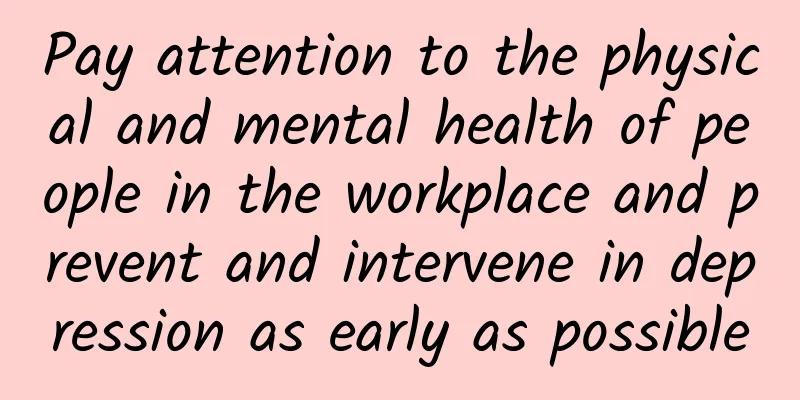How are uterine cysts formed and what are the causes?

|
Uterine cyst is a common gynecological disease in life, so don’t underestimate this disease. If it is serious, it can lead to infertility. How are uterine cysts formed? In fact, the process is similar to acne on our face. The uterine cyst appears because the glandular duct opening is blocked. Causes of uterine cysts: The cause of its formation is similar to that of "acne" on the face. During the healing process of cervical erosion, the new squamous epithelium covers the opening of the cervical gland duct or extends into the gland duct, blocking the opening of the gland duct; the connective tissue around the gland duct proliferates or scars form, compressing the gland duct, causing the gland duct to narrow or even block, and the drainage of glandular secretions is blocked. The cyst formed by retention is called cervical nabothian cyst. Causes 1. Stagnation of Qi and blood, especially catching a cold after childbirth, can lead to blood stasis and induce uterine cysts. 2. Minor internal injuries, depression and sadness, and poor circulation of Qi will cause blood stasis and blood stasis. 3. Phlegm and blood stasis condense, worry and sadness cause phlegm to form due to deficiency, thus blocking the Qi flow and causing Qi and blood to stagnate and form lumps. Based on these reasons, we can take some preventive measures against this disease, mainly: 1. Have regular gynecological examinations for early detection, early diagnosis, and early treatment. 2. Pay special attention to nutritional intake before, during and after menstruation and after childbirth, pay attention to controlling your emotions, and maintain a cheerful and optimistic mood. 3. The diet should be balanced and nutritionally balanced, and light and easy to digest food is best. Eat less or no raw, cold, or irritating food. Causes of infertility due to uterine cysts 1. A large amount of secretions will be produced in the patient's body. The white blood cells in the secretions will engulf sperm, reducing the number of sperm, greatly reducing the number and vitality of sperm, making it impossible for the egg to combine normally with the sperm to form a fertilized egg, leading to infertility. 2. The patient's cyst is located at the cervical opening. If it is not treated in time, the uterine cyst will gradually increase in size, thereby blocking the cervical opening, making it impossible for sperm to enter the uterine cavity smoothly, thus leading to infertility. |
<<: Can I have IVF if I have ovarian cysts?
>>: How many days does a menstrual period usually take?
Recommend
How to Make Your Vagina Smaller
Vagina enlargement is something that every woman ...
What causes low white blood cell count in pregnant women?
During pregnancy, the physical condition of pregn...
Why do cats like to step on breasts? Why doesn't my cat step on breasts?
Petting cats is a pleasure for many people. Somet...
Laser sequelae of cervical erosion
According to incomplete statistics, the probabili...
Is it true that taking Chinese medicine can help you conceive a girl?
Everyone knows that a girl is a mother's swee...
Does leucorrhea occur every day?
We all know that there is a very slippery liquid ...
What happens when you are 6 weeks pregnant?
Women will be very excited when they are pregnant...
Menstrual regulation and pregnancy pills soften the fallopian tubes
I believe everyone knows that the fallopian tubes...
I got pregnant 6 days after sex.
One of the most concerned topics for many couples...
What should I do if a girl has a stomachache during her period?
Girls may experience abdominal pain during their ...
Black stool during early pregnancy
Some women may experience some discomfort symptom...
Naked-eye 3D vision test pictures are trending on the Internet, and many ophthalmologists are called out by netizens hoping to get professional responses
Recently, a set of naked-eye 3D vision test pictu...
Can I have a baby if I am pregnant while breastfeeding?
After a woman gives birth, her body will be great...
Symptoms of low estrogen levels in girls
Estrogen is very important for women. Once the es...
Benefits of having a second child for a 46-year-old woman
Generally, the best age for women to have childre...









